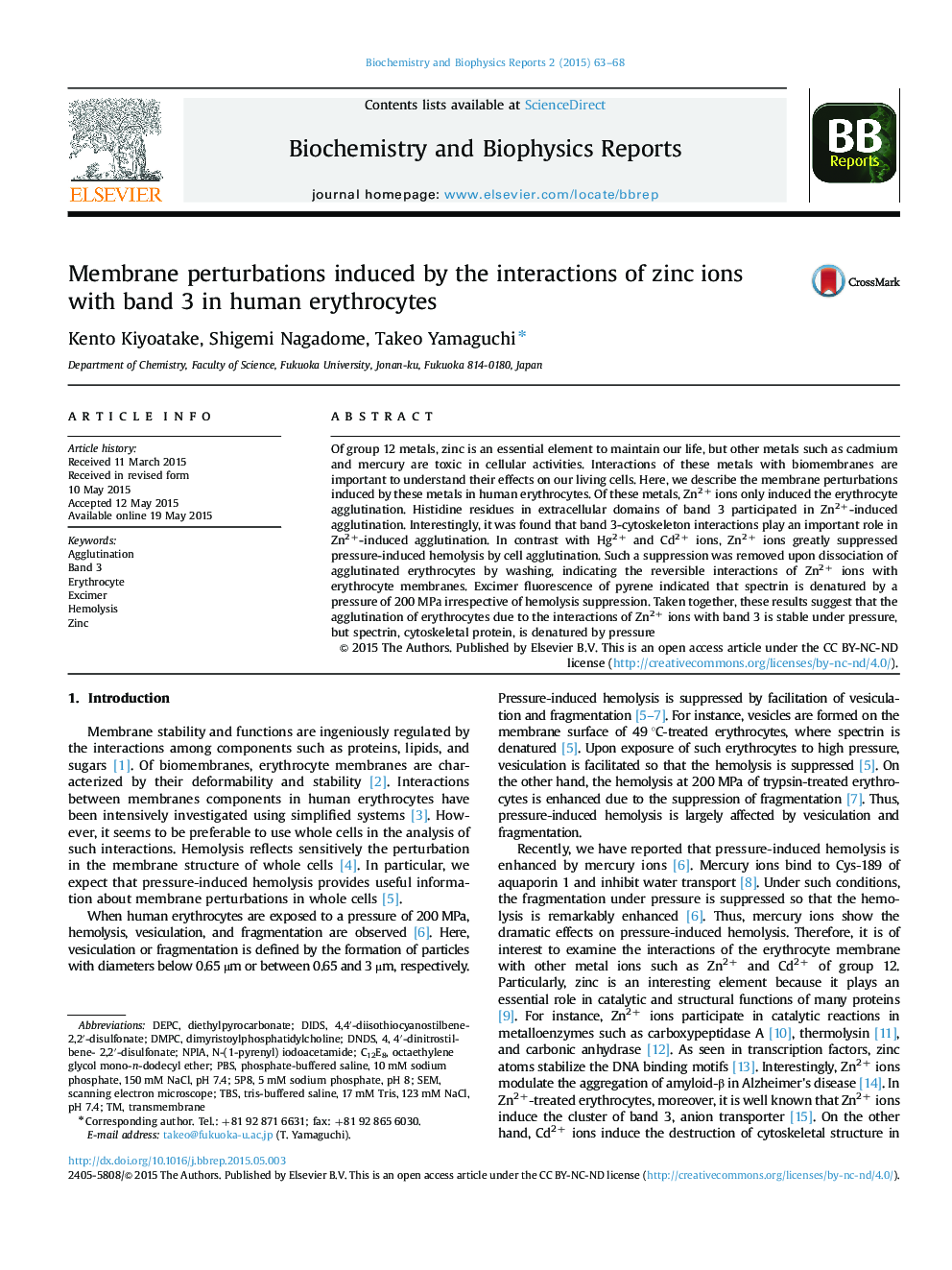| Article ID | Journal | Published Year | Pages | File Type |
|---|---|---|---|---|
| 1941873 | Biochemistry and Biophysics Reports | 2015 | 6 Pages |
•Human erythrocytes show different responses to the group 12 metal ions.•Interactions of Zn2+ with histidines of band 3 induce agglutination of erythrocytes.•Interactions of band 3 with skeleton are important in Zn2+-induced cell agglutination.•Pressure-induced hemolysis is suppressed in erythrocytes agglutinated by Zn2+ ions.•Spectrin is denatured upon compression of erythrocytes agglutinated by Zn2+ ions.
Of group 12 metals, zinc is an essential element to maintain our life, but other metals such as cadmium and mercury are toxic in cellular activities. Interactions of these metals with biomembranes are important to understand their effects on our living cells. Here, we describe the membrane perturbations induced by these metals in human erythrocytes. Of these metals, Zn2+ ions only induced the erythrocyte agglutination. Histidine residues in extracellular domains of band 3 participated in Zn2+-induced agglutination. Interestingly, it was found that band 3-cytoskeleton interactions play an important role in Zn2+-induced agglutination. In contrast with Hg2+ and Cd2+ ions, Zn2+ ions greatly suppressed pressure-induced hemolysis by cell agglutination. Such a suppression was removed upon dissociation of agglutinated erythrocytes by washing, indicating the reversible interactions of Zn2+ ions with erythrocyte membranes. Excimer fluorescence of pyrene indicated that spectrin is denatured by a pressure of 200 MPa irrespective of hemolysis suppression. Taken together, these results suggest that the agglutination of erythrocytes due to the interactions of Zn2+ ions with band 3 is stable under pressure, but spectrin, cytoskeletal protein, is denatured by pressure
Graphical abstractFigure optionsDownload full-size imageDownload as PowerPoint slide
